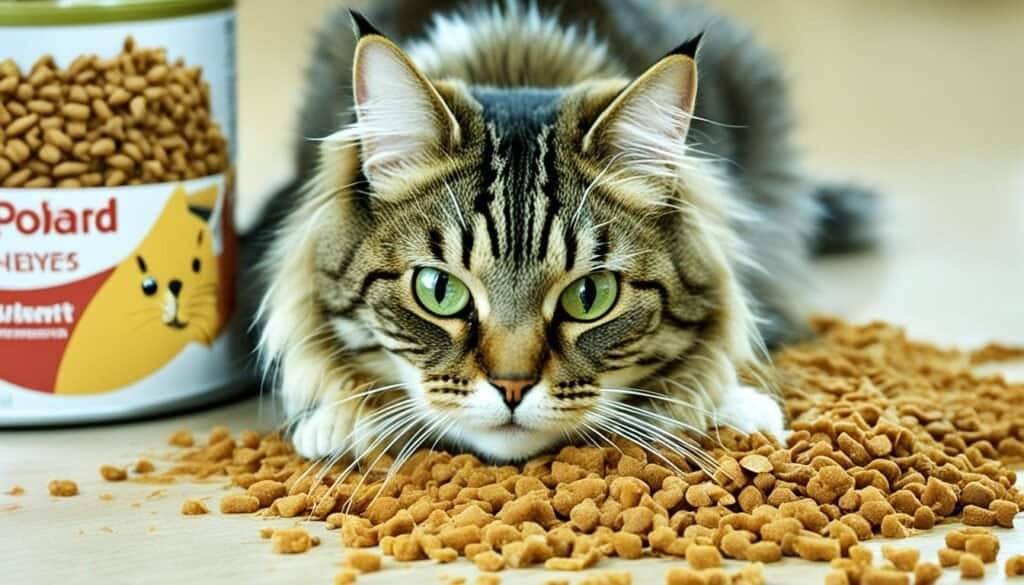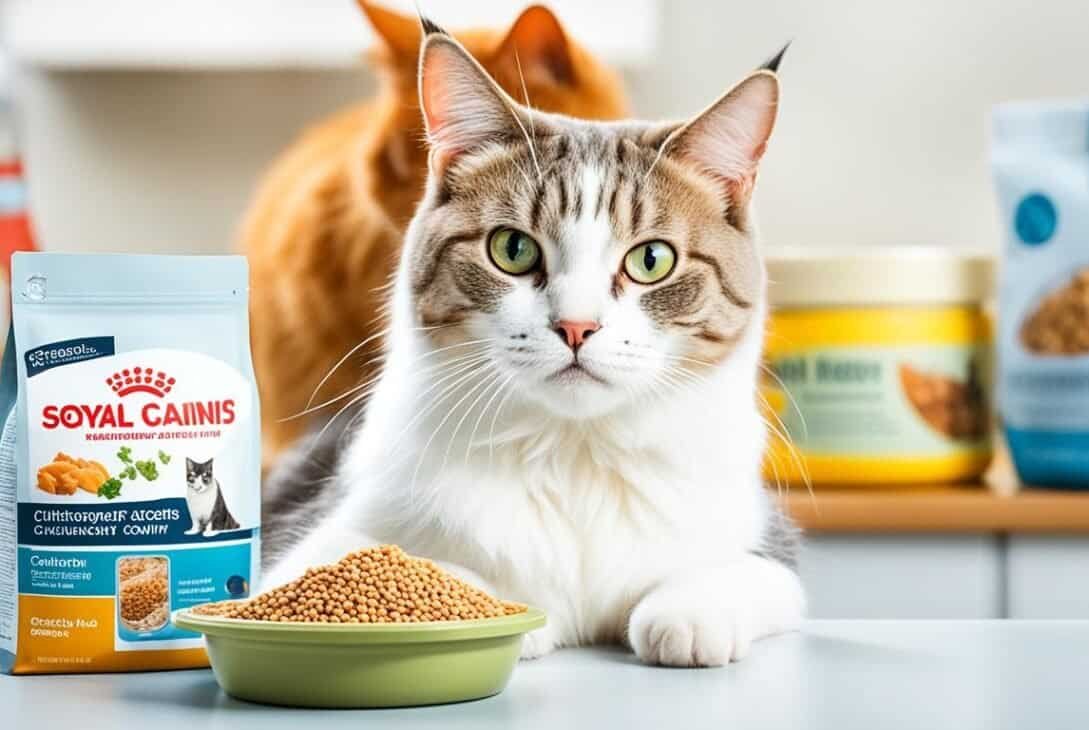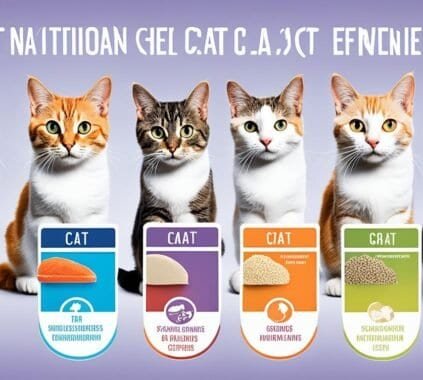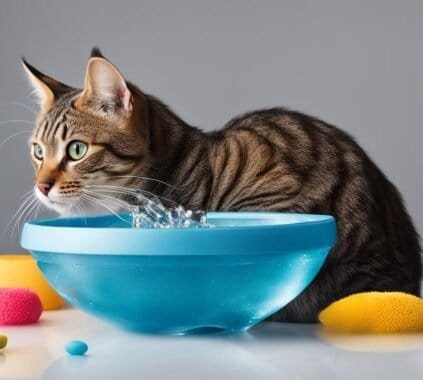A food allergy in cats is an adverse reaction caused by the immune system to a specific protein found in food. Common food allergens for cats include beef, fish, chicken, and dairy. Genetic predisposition plays a role in food allergies, and they can develop in cats at any age. The most common clinical sign of a food allergy in cats is chronic itching and skin inflammation, which often affects the face, ears, belly, and paws. Food allergies can also cause gastrointestinal symptoms such as vomiting and diarrhea. A reliable way to diagnose food allergies in cats is through an elimination diet trial, which involves feeding a diet that doesn’t contain any proteins the cat has been previously exposed to. Treatment involves avoiding the ingredients that trigger flare-ups and feeding a hypoallergenic diet.
Key Takeaways:
- Cat food allergies are caused by an adverse reaction to specific proteins found in food.
- Common food allergens for cats include beef, fish, chicken, and dairy.
- Chronic itching and skin inflammation are common signs of food allergies in cats.
- Food allergies can also cause gastrointestinal symptoms like vomiting and diarrhea.
- Diagnosing cat food allergies involves an elimination diet trial.
Risk Factors for Food Allergies in Cats
When it comes to cat food allergies, there are several risk factors to consider. One significant risk factor is a genetic predisposition, which means that some cats may be more prone to developing food allergies than others. Additionally, food allergies in cats are often related to atopy, which refers to inhalant or environmental allergies. It’s not uncommon for cats to react to both food ingredients and environmental allergens.
Interestingly, both male and female cats are equally likely to develop food allergies, and these allergies can occur at any age. Another important point to note is that cats can develop food allergies to ingredients they have previously consumed for a long time. This means that even if a cat has been eating a particular food without any issues, they can still develop an adverse reaction to it later on.
It is essential to highlight that there is limited research in this area, and there may be other allergens that have yet to be identified. However, by understanding these risk factors, cat owners can be more proactive in managing and preventing food allergies in their feline companions.
Common Symptoms of Cat Food Allergies
- Chronic itching and scratching
- Skin inflammation, especially on the face, ears, belly, and paws
- Gastrointestinal symptoms like vomiting and diarrhea
These symptoms may vary in intensity and can sometimes overlap with other conditions, making it challenging to diagnose food allergies based on symptoms alone. Therefore, it is crucial to consult with a veterinarian for a proper diagnosis.
Diagnosing Food Allergies in Cats
The most reliable way to diagnose food allergies in cats is through an elimination diet trial. This involves feeding a diet that doesn’t contain any proteins the cat has been previously exposed to. The trial lasts for at least eight weeks and can take the form of a veterinary hydrolyzed protein diet, a veterinary novel protein diet, or a home-prepared novel protein diet.
During the trial, the cat can only consume the prescribed food, water, and unflavored prescribed medications. This strict restriction is necessary to accurately assess if the cat’s symptoms are caused by a food allergy. If the cat’s allergy symptoms resolve during the trial, it indicates that the previous diet included allergenic ingredients.
Once the elimination trial is successfully completed, a food challenge is performed by reintroducing the old food. If the symptoms return within one week of the food challenge, the cat has been definitively diagnosed with a food allergy. This step confirms that the specific ingredient or ingredients in the previous diet were responsible for the allergic reactions.
In cases where a cat’s chronic itching is also caused by other conditions beyond food allergies, additional testing may be recommended to determine the exact cause of the skin condition. This helps the veterinarian establish an accurate diagnosis and develop an appropriate treatment plan for the cat’s overall health and well-being.

Treating Cat Food Allergies
While food allergies in cats cannot be cured, they can be effectively managed through careful dietary control. The key to managing cat food allergies is avoiding the specific ingredients that trigger flare-ups. Once a food allergy is diagnosed, it is important to make the necessary adjustments to the cat’s diet for long-term maintenance.
During the elimination diet trial, specific hypoallergenic foods are introduced to identify the allergens causing the cat’s symptoms. Once these allergens are identified, it is crucial to continue feeding the cat with the same food used during the trial or switch to a different hypoallergenic food as recommended by the veterinarian.
When choosing a cat food for managing allergies, it’s important to note that not all “limited-ingredient” or allergen-free cat foods available in retail stores have the same health and safety protocols as veterinary diets. Veterinary diets are specifically formulated and rigorously tested to ensure they are free from cross-contamination and meet the nutritional requirements for cats with food allergies.
When managing food allergies in cats, it is essential to work closely with a veterinarian to determine the best approach and select the most suitable hypoallergenic diet. With careful dietary control, the prognosis for cats with food allergies is generally good, and they can enjoy an improved quality of life.
Types of Food Allergies in Cats
Food allergies in cats are commonly caused by abnormal reactions to proteins in their food. These reactions can lead to various symptoms and discomfort for our feline friends. It’s important for cat owners to be aware of common food allergens for cats and the protein sources found in cat food.

- Common food allergens for cats: Beef, fish, chicken, wheat, corn, dairy, lamb, egg, barley, and rabbit are among the common food sources that can trigger allergies in cats. Individual cats may have different specific allergens, so it’s essential to identify which specific proteins cause an adverse reaction in your cat.
- Protein sources in cat food: When performing a hypoallergenic food trial to determine your cat’s specific allergens, it’s vital to choose a protein source and carbohydrate source that your cat has never consumed before. This eliminates the risk of your cat having a reaction to proteins or carbs they have been previously exposed to. Some novel protein foods for cats can include venison or kangaroo meat, while carbohydrates like wheat, barley, and corn should be excluded from the diet to pinpoint the specific allergens.
Identifying the specific proteins that trigger allergies in your cat can help you select the right cat food and create a diet plan that avoids these allergens. By providing a diet that eliminates the problematic proteins, you can significantly reduce the likelihood of your cat experiencing allergic reactions and improve their overall health and well-being.
Conclusion
Managing dietary sensitivities in cats, such as food allergies, is crucial for their overall health and well-being. These sensitivities can cause skin issues and gastrointestinal problems, affecting their quality of life. However, by implementing the right strategies and solutions, cat owners can effectively manage these conditions.
The first step in managing dietary sensitivities in cats is to identify and avoid allergenic ingredients. This involves carefully reading the labels of cat food products and selecting ones that are specifically formulated for cats with food allergies. These hypoallergenic diets are designed to eliminate the common allergens, allowing cats to enjoy their meals without experiencing adverse reactions.
Diagnosing cat food allergies may require an elimination diet trial, where potential triggers are removed from their diet, and their symptoms are closely monitored. Once the allergens are identified, lifelong dietary management is essential. Working closely with a veterinarian is crucial in determining the best approach for managing a cat’s dietary sensitivities and ensuring their nutritional needs are met.
By taking the necessary steps to manage dietary sensitivities in cats, such as providing them with appropriate hypoallergenic diets and avoiding allergenic ingredients, cat owners can greatly improve their cats’ quality of life. With a well-managed diet, cats with food allergies can lead happy, healthy lives free from discomfort and digestive disturbances.
FAQ
What is a food allergy in cats?
What are the common food allergens for cats?
Can cats develop food allergies at any age?
What are the symptoms of a food allergy in cats?
How are food allergies in cats diagnosed?
How are food allergies in cats treated?
What factors increase the risk of food allergies in cats?
Can cats develop food allergies to ingredients they have been eating for a long time?
What is a hypoallergenic diet trial?
Can cat food allergies be cured?
Are there over-the-counter cat foods that are safe for cats with food allergies?
What are the most commonly known food allergens for cats?
How can I manage my cat’s food allergies?
Last modified: February 26, 2024














[…] many cat foods do contain some amount of B vitamins, it may not always be enough to meet your cat’s specific […]
[…] your cat to drink more. Additionally, trying a cat water fountain and incorporating wet cat food into their diet can also help increase their water […]
[…] for your cat can have a significant impact on their feeding schedule. There are two main types of cat food: dry food and canned […]
[…] cat food offers several benefits for your feline companion. One of the key advantages of wet food is its higher moisture content, which makes it […]
[…] By providing them with the nutrients they need, a raw diet can help cats thrive. So, let’s delve into the numerous benefits of feeding your cat raw cat food. […]